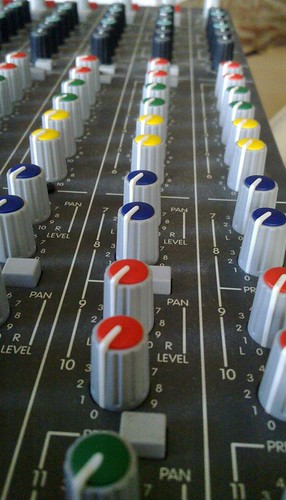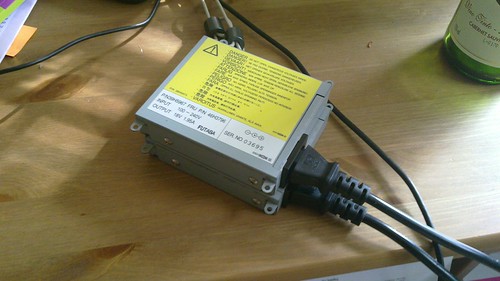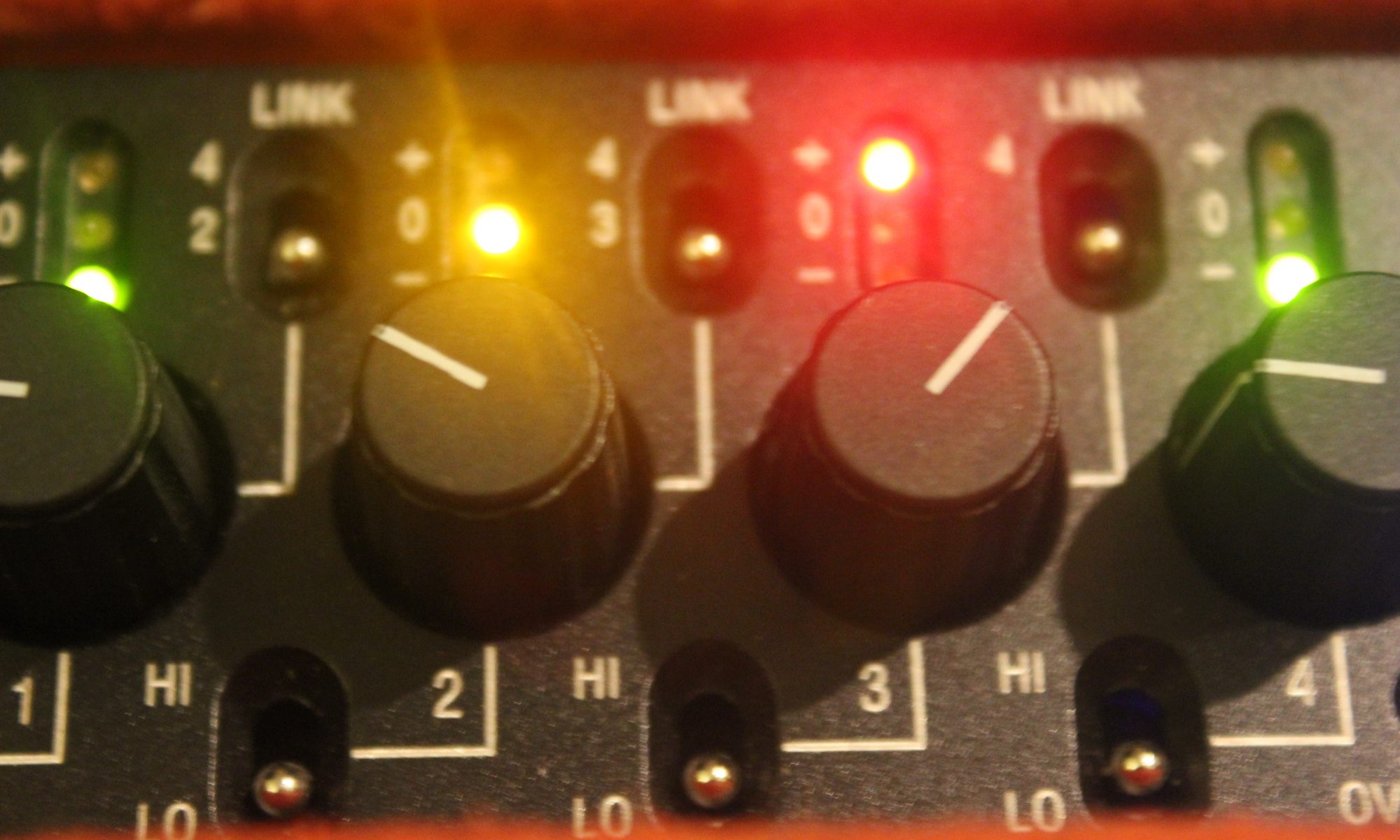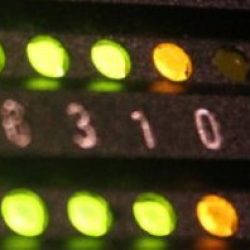I do quite a bit of mucking about with no-input mixer setups, it’s usually my little Tapco Blend 6, but started running short of Aux sends (independent outputs from the main output on a mixer) and started thinking of what you could do with more…
I had a look round and the only mixing desks you could readily get with this were desks designed for monitor engineers and they were big, or there’s the A&H Mixwizard 12M which looks just about ideal, apart from the price. I had a look into matrix mixers (which are essentially just aux sends) and found either were no longer available in the case of the Mackie/Oz Audio HMX-56 or again expensive (Midas XL-88)
Looks like it’s a homemade job then…
I’d been looking up matrix mixer schematics and experimenting on breadboard until I came across some input modules on ebay (NOS) for a DDA CS12 monitor console, for not much money at all (and the schematics are online). Ended up buying 2 of them (8 channels each). They have 12 aux sends per channel (more than enough).

Then looked into sourcing the stuff to make them work which was quite a bit more difficult. Found each channel is connected up and powered with a ribbon cable, which happen to be the same connectors as on a floppy drives (great!). But I needed at least 8 nodes and a way of hooking them up to a power supply (needing +18V 0V -18V and +48V rails). DIY job. Bought an IDC crimp, some lovely retro rainbow ribbon cable and some IDC headers (which took 3 months to get here from China and most parts were already broken…)
And I needed to power the thing. Replacement linear power supplies for mixers like this are big, heavy and expensive things and I wanted the desk to stay portable. You can’t usually get switching power supplies with two rails (or at least I couldn’t find any), so instead I bought 2 18V PSUs and wired them so 0V on one and +18V on the other were soldered to the same plug, making that 0V, so 0v on the ‘low’ power supply was now . An XLR seemed to be the only 3 pin connector I had handy so soldered them to this (let’s hope I don’t ever plug this into a mixer or similar.
After counting (and double checking) the number of each strand on the ribbon cables (the rainbow effect was very handy), I separated out all those connected to power and put them on another XLR.

After also crimping on 8 IDC headers and plugging them into the PSUs they started making a bad clicking noise. Something was shorting out. After going through the XLR connections multiple times to make sure something wasn’t touching it turned out one of the crimps wasn’t in line and was shorting out adjacent cables.

After the cable was taken apart and put together I found most of my IDC headers were now completely broken… Fortunately one was left so I plugged it in.

It’s alive!

Next steps are (when I’ve got more headers) sorting out the outputs. I’d got hold of a Mosses and Mitchell B-Gauge patchbay I was going to use for this (with patches going back to the line in), but on second thoughts everything it’ll be plugged into will use A-Gauge jacks so might get one of those instead.
![]()
![]()






